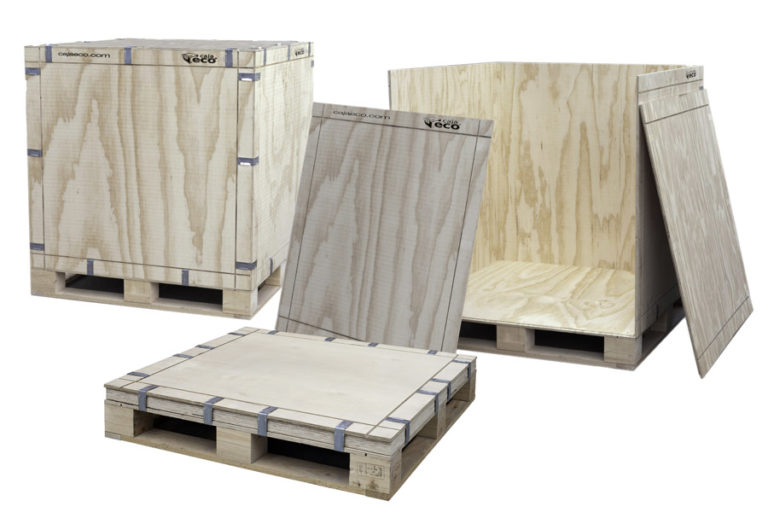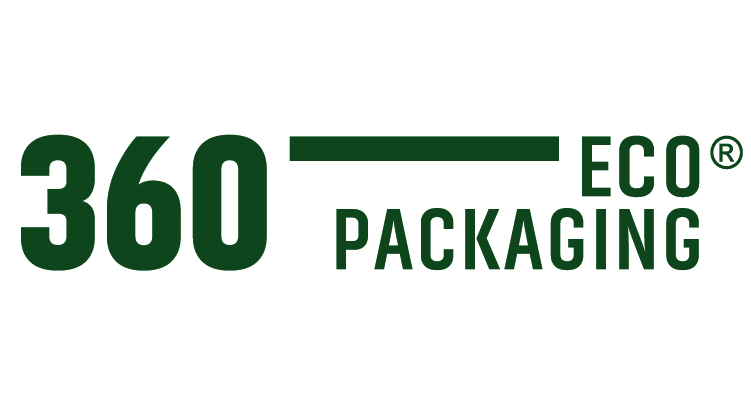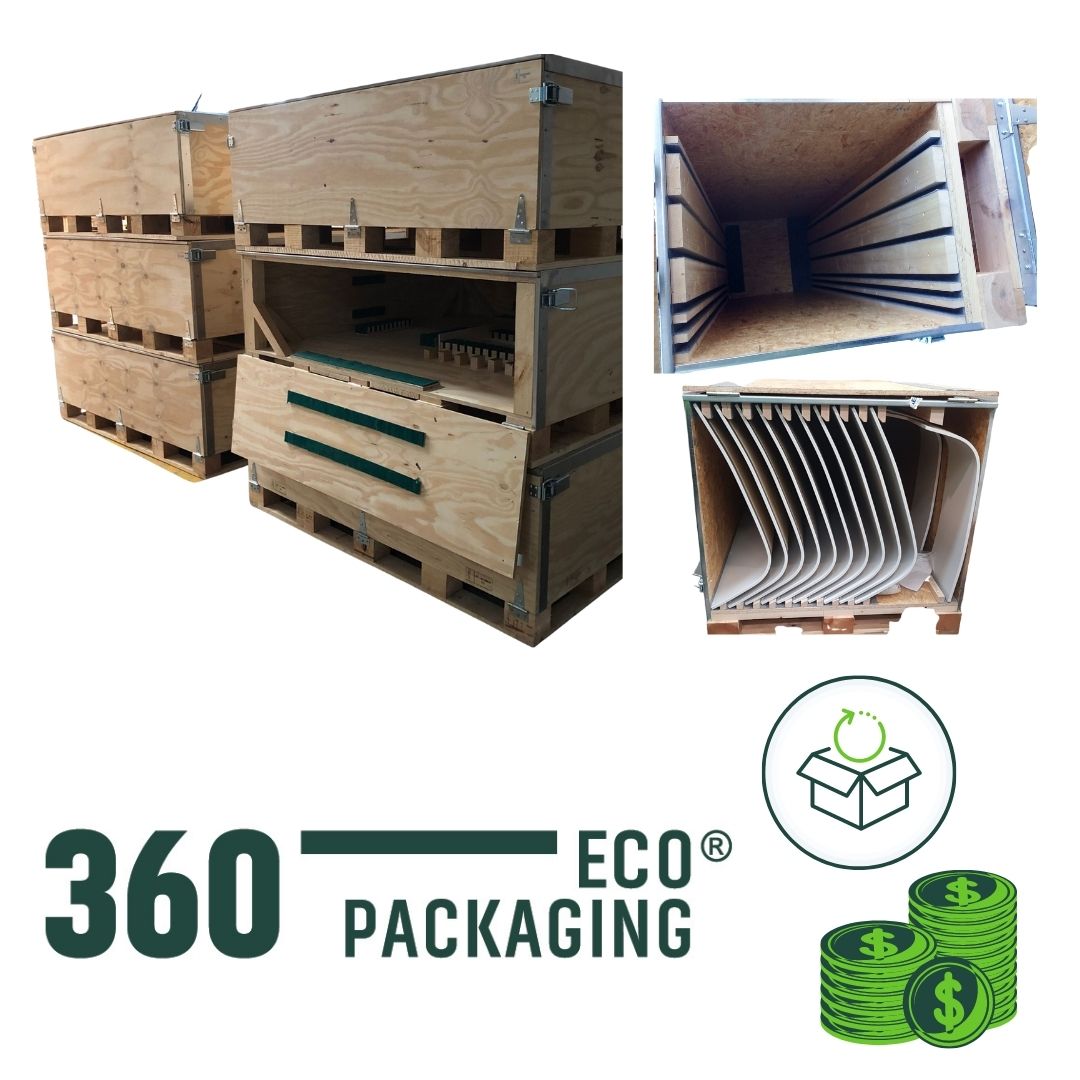Since ancient times man has had the need to protect his belongings, hence the following post on the history of packaging and its evolution.
Over the years the evolution of the history of packaging has been parallel to the economic and social development of the time. As manufacturers of industrial packaging, these are for us the 7 most important milestones in the history of packaging.
1. From clay to wood for transporting wine
In ancient Rome, large clay containers were already used to store and transport wine. The clay amphorae and jars were airtight and protected the wine from oxidation. Upon conquering French lands, the Roman Empire discovered the wooden barrel; an easy-to-handle container, lighter and more consistent than clay for transporting wine from Greece, Gaul and Hispania.
This was the way it was done for centuries until glass arrived. In the 17th century the use of the bottle became widespread. However, wood continued to be a highly valued packaging in the logistics of the wine sector.

2. The emergence of corrugated cardboard
The Chinese are considered to be the first to use corrugated cardboard in the 16th century. However, it was the pleats of Victorian fashion in the mid-19th century that led to the development of corrugated cardboard.
In 1856 Healy and Allen patented in England the use of pleated paper as an inner reinforcement for stiff top hats. Years later, the American pharmacist A. Jones came up with the idea of wrapping fries in corrugated cardboard. Jones came up with the idea of wrapping perfume bottles in corrugated paper to protect them from knocks.
In 1874, Oliver Long improved Jones’ patent by adhering the corrugated paper to a flat sheet of paper and then to two flat sheets of paper. Liners were born, the structure of corrugated cardboard that provides the compression and strength of the cardboard boxes we use today.
In 1890 Robert Gair invented the corrugated box and the American Thompson and Norris Co. began manufacturing the first boxes.
Today the cardboard box is the preferred packaging for ecommerce due to its lightness, strength and low cost.

3. The arrival of the europallet
It was not until World War II that the use of pallets became popular for moving military equipment. Until then, wooden crates, skids or barrels were used to move the goods.
At the end of the war, the first American pallet patents were registered. However, train wagons in Europe had dimensions in which they did not fit well, so it was necessary to reduce them and regulate their manufacture so that they all had the same dimensions and could make better use of space. In the 60’s the Euro pallet was born.
Since 1991 the European Pallet Association (EPAL) issues licenses to manufacturers and under the EPAL seal certifies the quality of the pallet and identifies reliable suppliers.

4. The collapsible wooden box, a step towards packaging engineering
During World War II, the Allied side had to make a great logistical effort to get weapons, equipment and medical supplies by ship and plane to the places in conflict. One of the biggest challenges was shipping war vehicles.
The Jeep automobile company had designed the “Willys,” an agile and rugged all-terrain vehicle, the forerunner of the 4×4 we know today. For domestic shipments, vehicles were stacked on top of each other on pallets. But shipping them across the ocean required special packaging. And an innovative solution was found: the disassemblable wooden crate.
The “Willys” was stored in pieces and once at destination the crate was disassembled, allowing access to the vehicle and assembly in a matter of minutes.
Today, packaging engineering continues to successfully meet the challenges of the automotive sector.


5. The expansion of plastic
The origin of plastic is related to the game of billiards. An American company decided to award 10,000 dollars to whoever could create a material to replace ivory, which was scarce at the time, to manufacture billiard balls. In 1870, the Hyatt brothers chemically modified cellulose to produce celluloid, winning the contest and obtaining the first plastic in history.
In 1907, Baekeland invented Bakelite, the first fully synthetic commercial plastic, described as thermosetting, insulating and resistant to water, acids and moderate heat. In the following decades, new plastics derived from the processing of fossil fuels, such as polyethylene or polyvinyl chloride (PVC), were investigated.
At present, the applications of plastic are infinite, and it is a very common material in the manufacture of returnable containers and packaging for industrial use.

6. The box that revolutionized the transport of goods: the sea container.
Since they made the first transatlantic crossing in the mid-twentieth century, sea containers have revolutionized the transport of goods. Before their appearance, ships were loaded manually, which meant long waits in port.
The businessman Malcolm McClean came up with a system whereby cargo could be stacked inside a large metal box and transported by ship or truck. Thus was born the container, which made its first trip in 1956, from New Jersey to Houston.
A decade after its first trip, the ISO (International Standard Organization) developed standards for its international use. Containerization led to a reduction in the cost and time of freight transport, giving way to intermodality.

7. Ecopackaging and sustainable packaging
In the mid-twentieth century the packaging industry began its development and today continues to evolve.
With self-service, marketing, the computer and the internet, packaging began to spread, becoming a competitive advantage for companies and a lure for the consumer.

Today, the Circular Economy model and the preferences of an increasingly eco-conscious consumer force the industry to look for sustainable packaging solutions, designed from the source to reduce the use of resources and revalue their waste, without forgetting their original purpose: to protect the goods.
![]()



